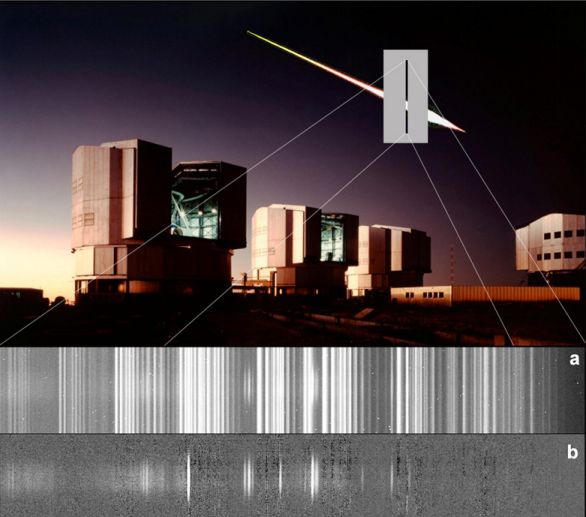
|
Explanation: Chasing the brief flash of a meteor trail across the sky with a very large telescope is a nearly impossible task. But on May 12, 2002, astronomers got lucky, as a bright meteor chanced across the narrow slit of their spectrograph at the Paranal Observatory. At the time, the spectrograph was being used to study the light from a supernova, separating and recording the many near-infrared emission lines produced by atoms in the distant stellar explosion. Below this artistic montage of a meteor streak and Very Large Telescope units at Paranal, panel a shows the resulting spectrum of both the supernova and the May 12 meteor combined. Panel b shows the emission spectrum of the meteor alone, after subtracting away the supernova and background contributions. The meteor emission is due to colliding oxygen and nitrogen atoms and molecules in the superheated air along the glowing trail at an altitude of about 100 kilometers.
|
January February March April May June July August September October November December |
| |||||||||||||||||||||||||||||||||||||||||||||||||||||||
NASA Web Site Statements, Warnings, and Disclaimers
NASA Official: Jay Norris. Specific rights apply.
A service of: LHEA at NASA / GSFC
& Michigan Tech. U.
Based on Astronomy Picture
Of the Day
Publications with keywords: meteor - spectrum
Publications with words: meteor - spectrum
See also:
- APOD: 2025 August 25 Á The Meteor and the Star Cluster
- APOD: 2025 August 6 Á Meteor before Galaxy
- APOD: 2024 November 27 Á The Meteor and the Comet
- Meteor over the Bay of Naples
- Fireball over Iceland
- APOD: 2023 August 23 Á The Meteor and the Galaxy
- APOD: 2023 July 16 Á Meteor and Milky Way over the Alps
